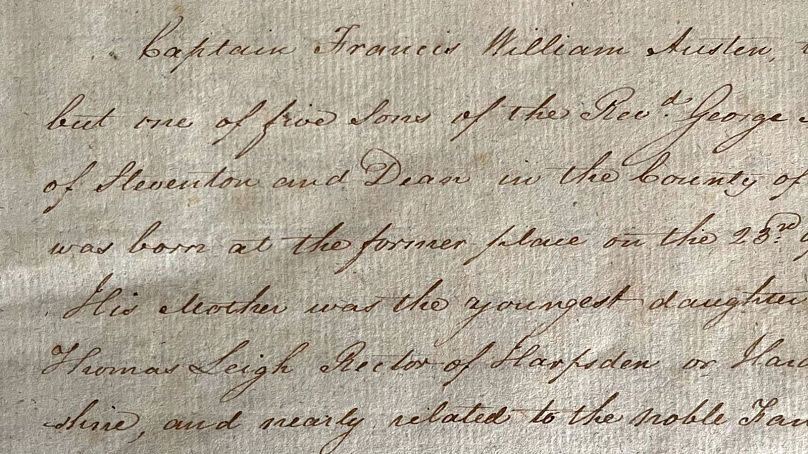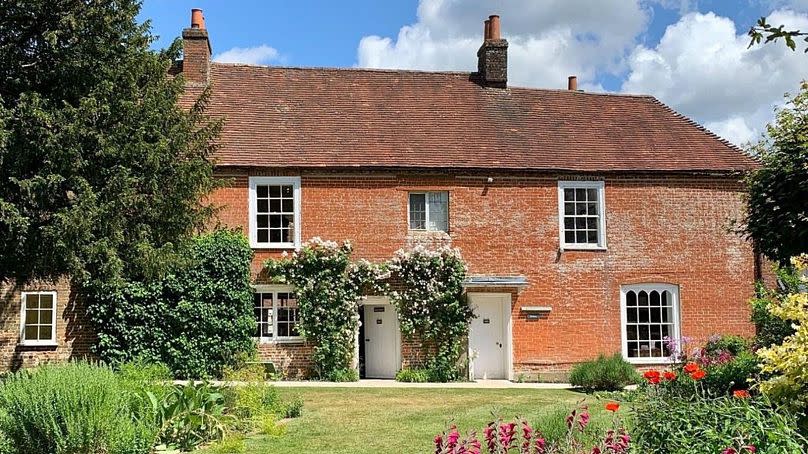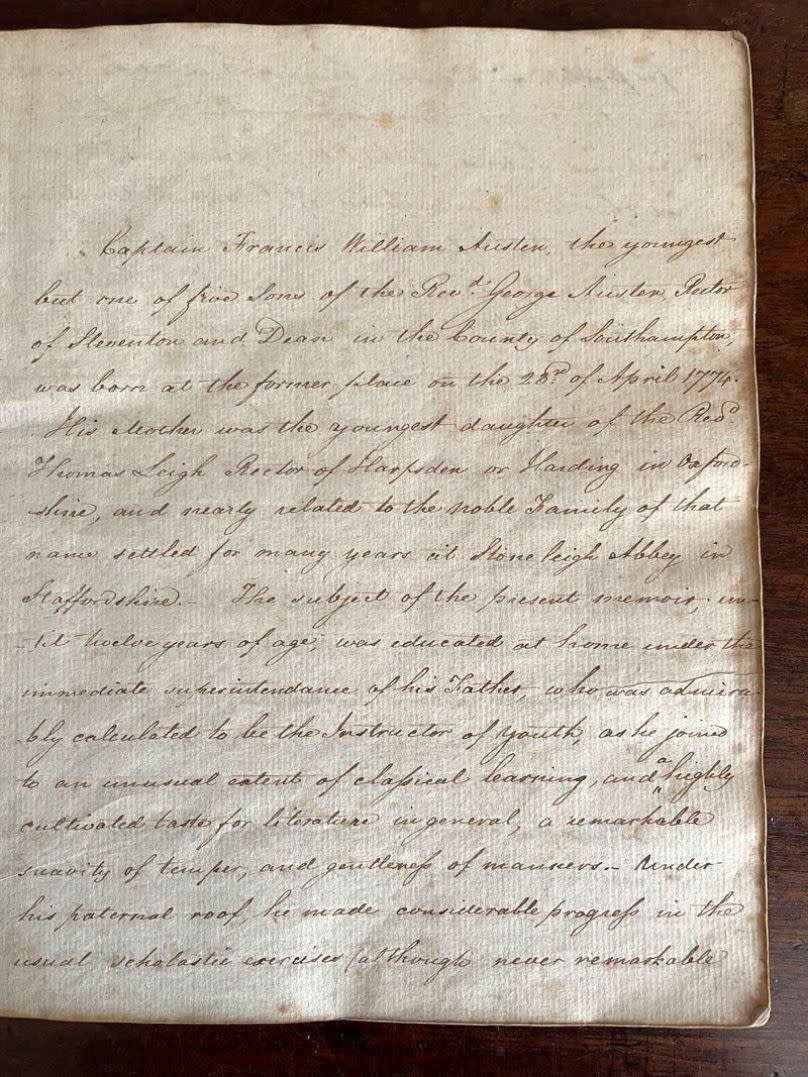Jane Austen’s House Museum enlists the public’s help to transcribe her brother’s memoir

- Oops!Something went wrong.Please try again later.
- Oops!Something went wrong.Please try again later.
Are you a card-carrying Jane Austen fan who’s always dreamt of deciphering the handwriting of an octogenarian from the 19th century?
Niche, but no one’s judging your journey.
Jane Austen’s House Museum has obliged and asked the public to help transcribe a manuscript written by Jane’s brother, Admiral Sir Francis Austen, in his final days.
The manuscript consists of 79 pages of handwritten text written in 1863. Though written in third person, Francis is believed to have penned it himself in his late 80s, which would explain why the neat handwriting devolves into chicken scratch in later pages.
The museum acquired the manuscript at an auction in 2023 from Austen’s descendents. The text as a whole remains unpublished although some details are known, as short extracts have been published in various biographies of the Austens.
Since making the call for a crowdsourced transcription, the public has revealed that appetite for Austen is still strong.
“The response has been absolutely incredible,” Lizzie Dunford, Director of the Jane Austen’s House Museum, shared with Euronews Culture. “We were contacted by over 2000 people offering their help in the first 24 hours – and for just 79 pages of text.”
“There is clearly a huge public appetite to be involved in working with these documents from our cultural and literary heritage, so this has been fantastic to see.”

So intense was the response that they actually had to close applications early due to the overwhelming demand.
Existing volunteers have been sent a high-definition image of one page of the memoir along with instructions.
The webpage explains: “Reading and recording historic handwriting can be challenging, but it isn’t complicated. You just write down exactly what you see on the page!”
If anything is unclear or unreadable, transcribers can leave notes for the museum. The same page will be cross-checked by multiple volunteers, filling in any hard-to-read parts or disputed meanings.
“As we have had so many responses, we will be able to send the same page to quite a few different people,” explains Dunford. “We’ll then be able to collate all of the transcriptions and bring them together into one finished document.”
Indeed, once all of the entries are compiled, the final transcription will be published online and made available to the public.
The hope is that the rare document could shed some new light on the family life of one of English literature's most beloved writers.

Francis Austen was a high-ranking officer in the Royal Navy who lived to be 91. Affectionately called Frank by his family and Fly by his siblings, he took in his sisters Jane and Cassandra and mother at his home in Southampton after the death of his father. His memoir describes their domestic life together.
“We’re really looking forward to finding out more are Sir Francis Austen’s experiences as he was posted around the world, and how these might have influenced some of Austen’s most famous characters,” Dunford tells Euronews Culture. “Naval officers play key roles in both Mansfield Park and Persuasion, and the Napoleonic Wars are the backdrop to all of her novels. It will be fascinating to see this through the eyes of Austen’s brother.”
The passages that have already been published include an account of Frank's life from his childhood in Chawton, to entering the Navy at age 12, descriptions of his life at sea, a stay with family in Bath in 1802, his marriage and his retirement to Chawton.

The memoir is one of the latest acquisitions in Jane Austen’s House Museum’s unparalleled collection – which includes letters, jewellery and first-editions of Jane’s novels – and the museum is eager to publish the results.
“We simply don’t know how long this will take,” says Dunford. “With this many participants, and the potential for future research, we know that it will take time simply to get back to everybody. We are very much looking forward to the end result!”
The museum, located in the Chawton cottage where Jane spent the last eight years of her life and wrote most of her novels – including "Pride and Prejudice," "Emma" and "Persuasion" – has been open to the public since 1949 and is celebrating its 75th anniversary this year.
“We will be hosting a whole weekend of celebrations in mid-July, with talks, events, and our famous annual dress-up day,” concludes Dunford. “All details will be coming soon to our website, social media channels and newsletter.”
Janeites, you’ve been apprised. And don’t follow Mrs. Elton's preference in "Emma" when she says that “there’s nothing like staying at home for real comfort.” Real comfort is in deciphering and dress-up.

